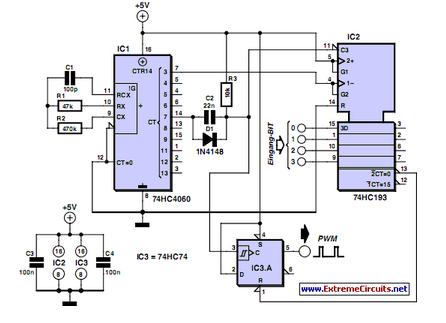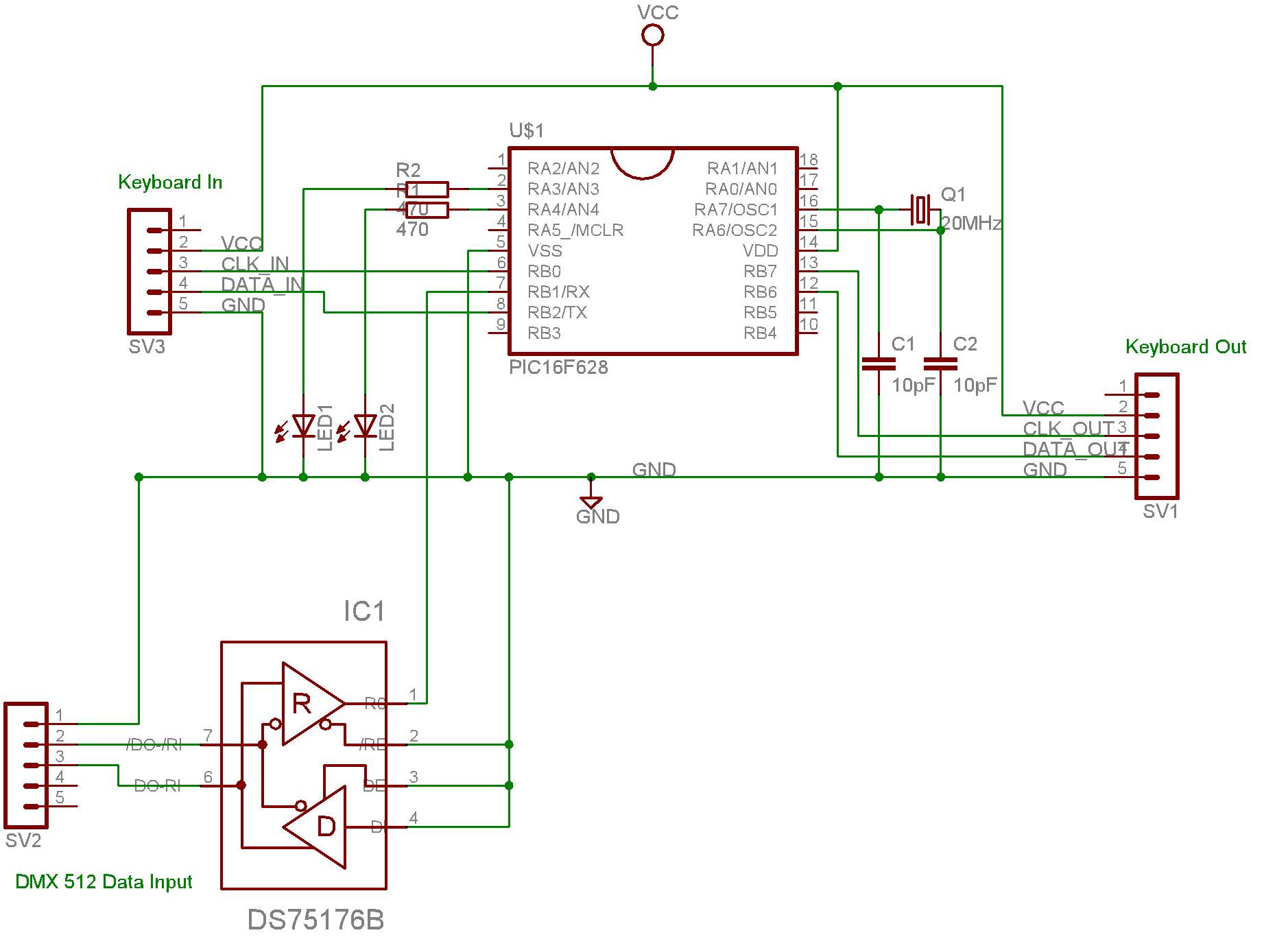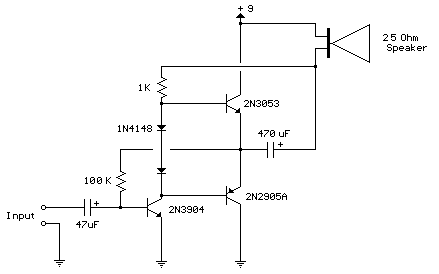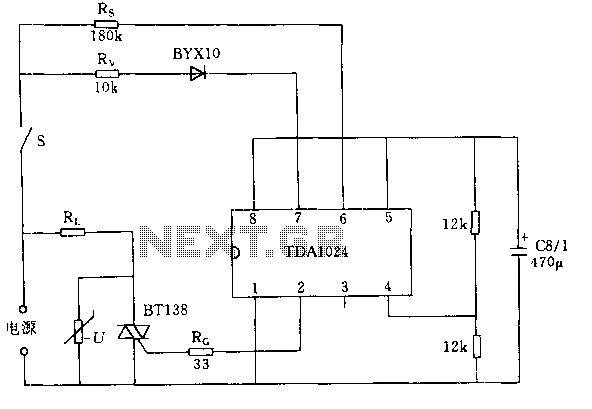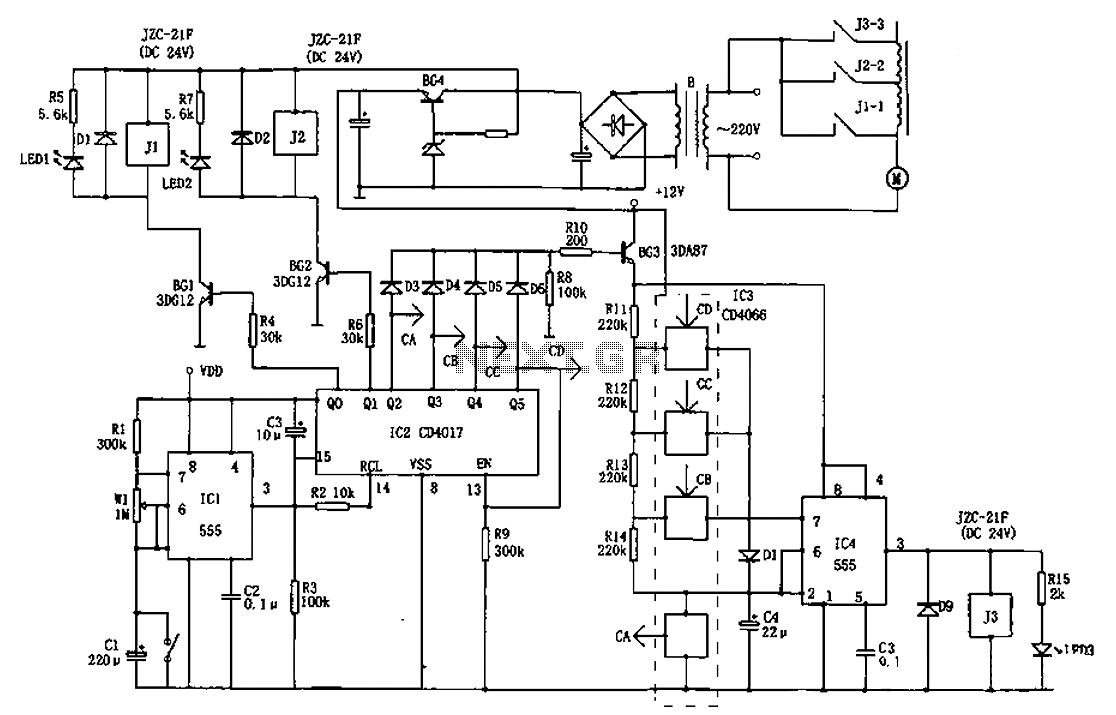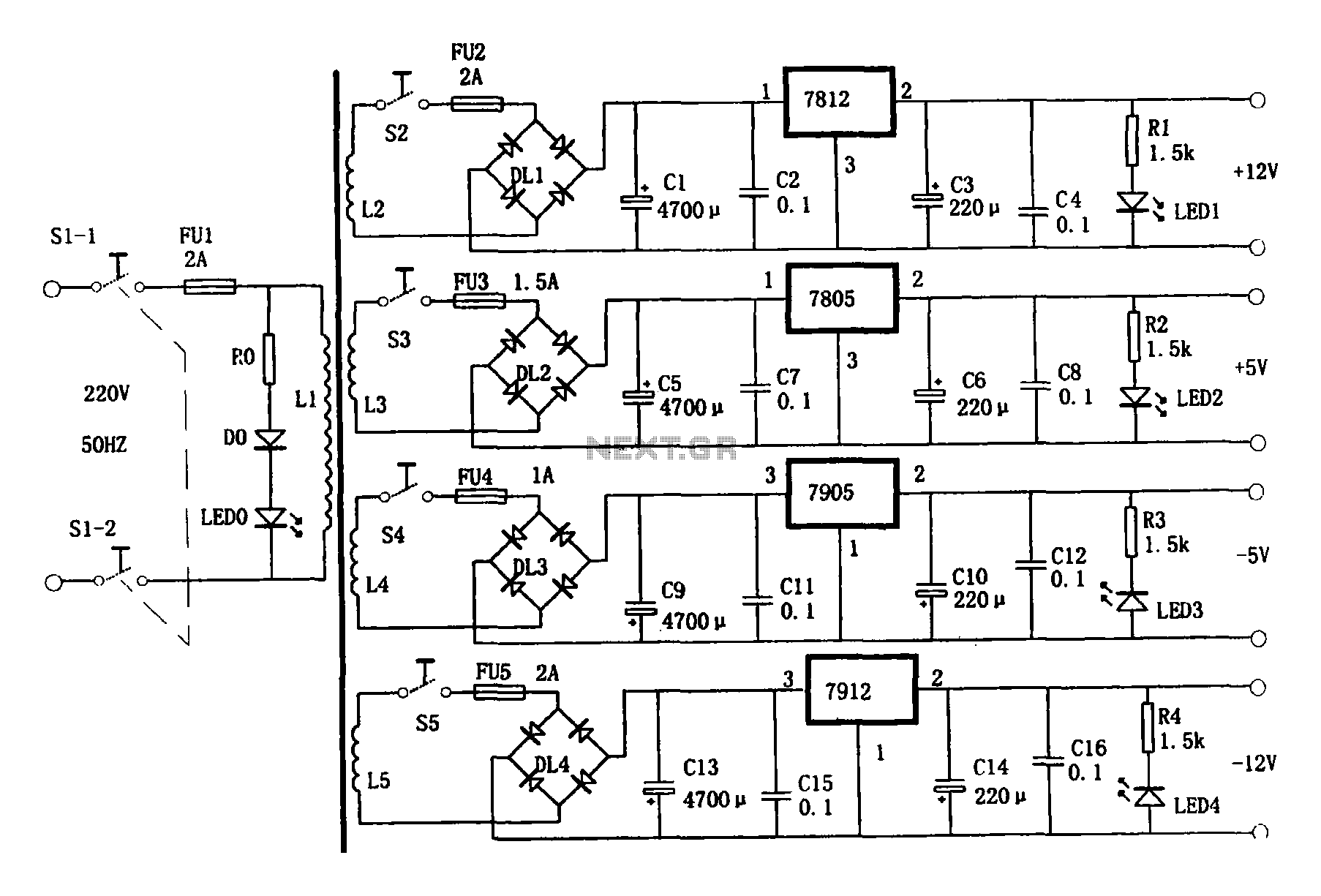
Video Signal Carrier Circuit
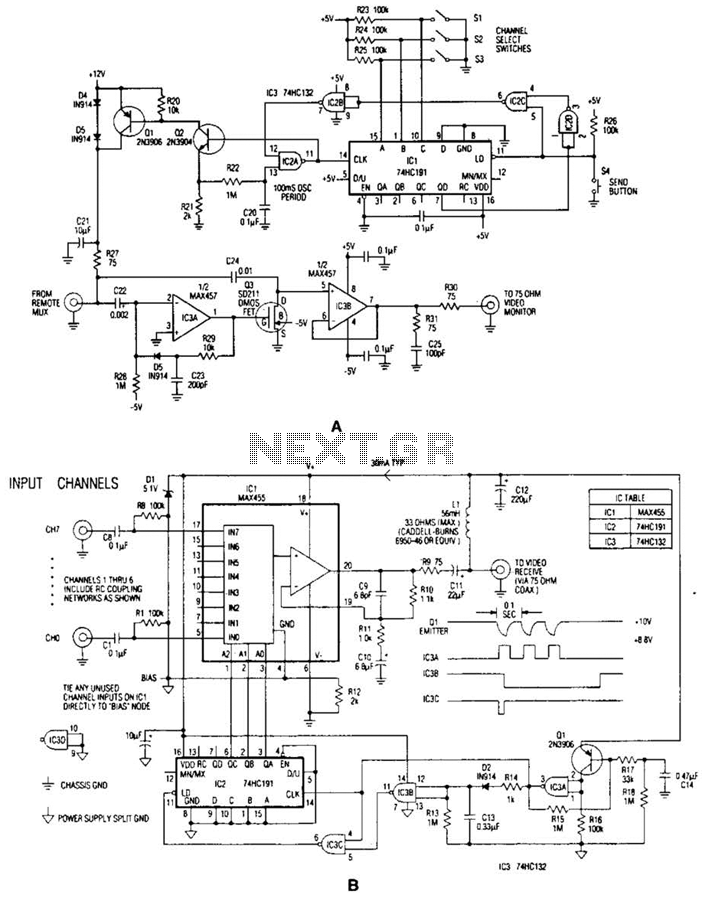
In the video system illustrated in Figures A and R, a single coaxial cable transmits power to a remote location, selects one of eight video channels, and returns the selected signal. This system can choose from several remote surveillance camera signals and display the image on a monitor located near the interface box. The core component of the multiplexer box (A) is a combination of an 8-channel multiplexer and an amplifier (IC1). Capacitor C1 couples the multiplexer’s baseband video output to the coaxial cable, while inductor L1 decouples the video from the DC power that is transmitted on the same line. This power, approximately 30 mA at 10 V, supplies all circuitry within the multiplexer box. In the interface box (B), the desired channel is encoded using three bits, which can be set either by switches, as depicted, or by an applied digital input. A momentary press of the send button triggers downconverter IC1 and gated oscillator IC2A to initiate a channel-selection burst.
The video system described employs a coaxial cable as a multifunctional medium, enabling both power supply and video signal transmission. The multiplexer box (A) integrates an 8-channel multiplexer and an amplifier (IC1) that are essential for managing multiple video signals. The coupling capacitor (C1) is critical for ensuring that the baseband video signal is effectively transmitted over the coaxial cable without interference from the DC power. The inductor (L1) serves to isolate the video signal from the DC power line, preventing any potential disruptions that could arise from shared pathways.
Within the interface box (B), the channel selection mechanism operates through a binary encoding system, utilizing three bits to represent eight possible channels. This encoding can be accomplished through physical switches or by an external digital input, providing flexibility in operation. The momentary activation of the send button initiates a sequence that involves the downconverter IC1 and the gated oscillator IC2A. This sequence is crucial for generating a channel-selection burst, which ensures that the correct video channel is selected and displayed.
The design of this system emphasizes efficiency and reliability, particularly in environments where remote surveillance is necessary. The coaxial cable's dual function minimizes the need for additional wiring, reducing installation complexity and potential points of failure. Overall, this video system exemplifies an effective integration of signal processing and power distribution, suitable for various surveillance applications. In the video system of Figs. A and R, a single coaxial cable carries power to the remote location, selects one of eight video channels, and returns the selected signal. The system can choose one of several remote surveillance-camera signals, for example, and display the picture on a monitor near the interface box.
The heart of the multiplexer box (A) is a combination 8-channel multiplexer and amplifier (IC1). Cll couples the multiplexer`s baseband video output to the coax, and LI decouples the video from dc power arriving on the same line, This powerapproximately 30 mA at 10 Vsupplies all circuitry in the multiplexer box. In interface box (B), a desired channel is encoded by three bits, set either by switches as shown or by an applied digital input. Momentary depression of the send button triggers downconverter IC1 and gated oscillator IC2A to initiate a channel-selection burst,
🔗 External reference
The video system described employs a coaxial cable as a multifunctional medium, enabling both power supply and video signal transmission. The multiplexer box (A) integrates an 8-channel multiplexer and an amplifier (IC1) that are essential for managing multiple video signals. The coupling capacitor (C1) is critical for ensuring that the baseband video signal is effectively transmitted over the coaxial cable without interference from the DC power. The inductor (L1) serves to isolate the video signal from the DC power line, preventing any potential disruptions that could arise from shared pathways.
Within the interface box (B), the channel selection mechanism operates through a binary encoding system, utilizing three bits to represent eight possible channels. This encoding can be accomplished through physical switches or by an external digital input, providing flexibility in operation. The momentary activation of the send button initiates a sequence that involves the downconverter IC1 and the gated oscillator IC2A. This sequence is crucial for generating a channel-selection burst, which ensures that the correct video channel is selected and displayed.
The design of this system emphasizes efficiency and reliability, particularly in environments where remote surveillance is necessary. The coaxial cable's dual function minimizes the need for additional wiring, reducing installation complexity and potential points of failure. Overall, this video system exemplifies an effective integration of signal processing and power distribution, suitable for various surveillance applications. In the video system of Figs. A and R, a single coaxial cable carries power to the remote location, selects one of eight video channels, and returns the selected signal. The system can choose one of several remote surveillance-camera signals, for example, and display the picture on a monitor near the interface box.
The heart of the multiplexer box (A) is a combination 8-channel multiplexer and amplifier (IC1). Cll couples the multiplexer`s baseband video output to the coax, and LI decouples the video from dc power arriving on the same line, This powerapproximately 30 mA at 10 Vsupplies all circuitry in the multiplexer box. In interface box (B), a desired channel is encoded by three bits, set either by switches as shown or by an applied digital input. Momentary depression of the send button triggers downconverter IC1 and gated oscillator IC2A to initiate a channel-selection burst,
🔗 External reference
Warning: include(partials/cookie-banner.php): Failed to open stream: Permission denied in /var/www/html/nextgr/view-circuit.php on line 713
Warning: include(): Failed opening 'partials/cookie-banner.php' for inclusion (include_path='.:/usr/share/php') in /var/www/html/nextgr/view-circuit.php on line 713
